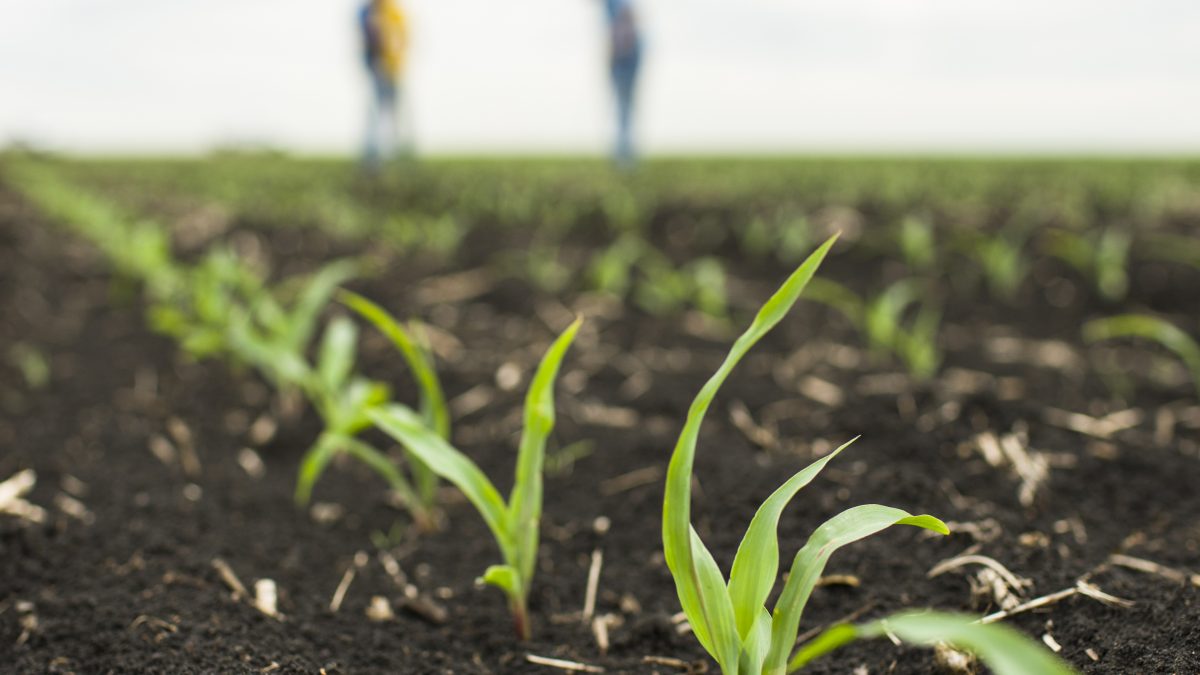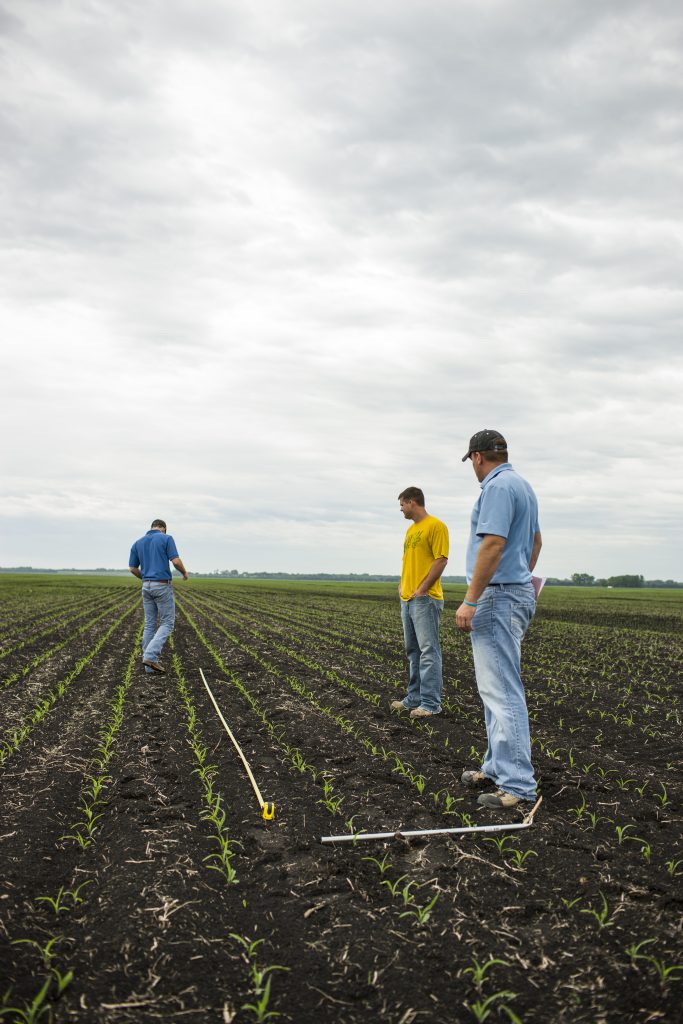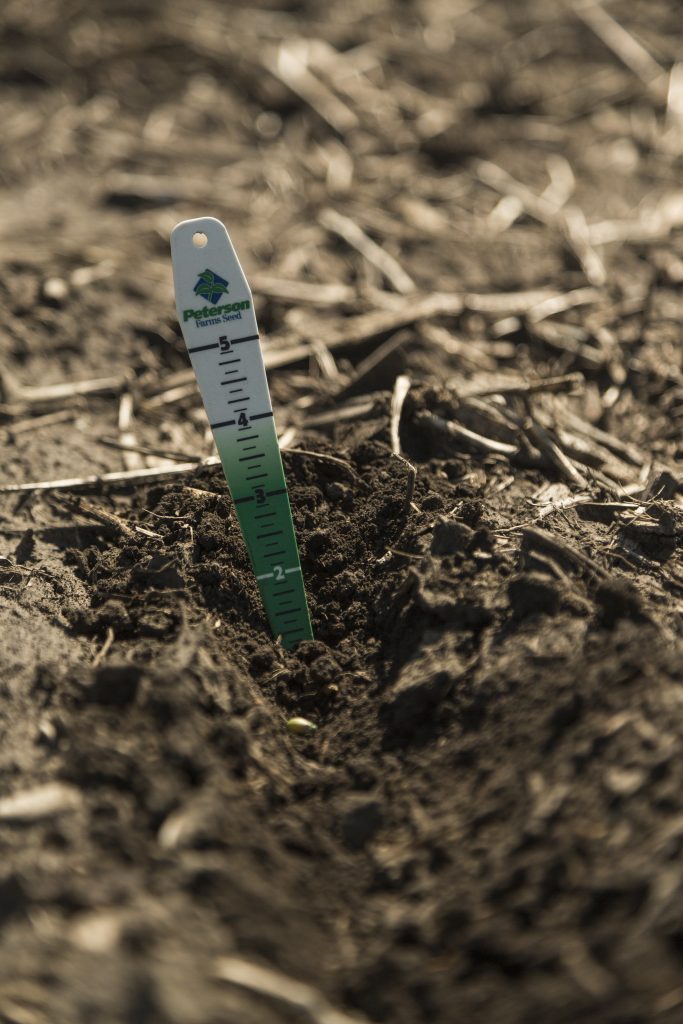Evaluate Your Corn Early – Adam’s Three Tips

May is over half gone, which means the crop is in the ground and hopefully off to a good start. This time of the growing season is a great opportunity to evaluate your corn planting method and take some notes to refer to if issues arise later. Although it’s early in the growing season, now is the time to get back in the field to ‘recheck’ your work.
Population
First, evaluate your population. Corn does not like competition, be it from weeds or another corn plant that is too close. Count the number of plants in 1/1000th of an acre (23’9” for 22” rows, 17’5” for 30” rows). Do this in six or seven different areas in the field and average your counts. The actual results should be within five percent of what was planted. Getting around five to six bu/A per 1,000 plants is expected and any reduction from this will dramatically reduce yield. If conditions were poor and stand loss has happened, replanting should be considered if the final stand estimate is less than 20,000 plants/A.
Stand Uniformity
While determining plant population, I would also suggest checking stand uniformity. Ideally, 80 percent of the plants should be within two inches of the target spacing (9.5” in 22” rows, 7” in 30” rows with a stand of 30,000 plants) based on an average spacing in each of the aforementioned locations.
Dig for the seed in wide blank spaces to see if the cause of the empty spot was a germination issue or a skip. Be sure to take the time to figure out why problems exist. Was there a metering problem in the planter leading to doubles or skips? Is emergence uneven due to cool soil temps or varied planting depths?
To be uniform, corn plants should germinate within a 48-hour window. If a plant emerges outside of the 48-hour window and grows one collar or more behind its neighbor, it will likely not produce an ear or will miss the ideal pollination window.
Planting Depth
While it is always good to stop and check seed depth when out planting, use this trip to the field as another opportunity to check depth. The seed should still be found easily below the mesocotyl. Also, check for sidewall compaction to determine if the roots are running with the row and are relatively flat along the seed trench. If these conditions are found monitor the field during the duration of the season for root issues and possible lodging.
As we all know, corn excels when it has a strong start. I’m a big believer in scouting your fields now to evaluate your corn planting practices early. This is the first step of many to increase your success in the field. Some of the issues found during stand evaluations are curable and can be addressed. The rest should be taken as learning experiences for next year.






